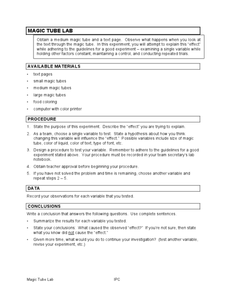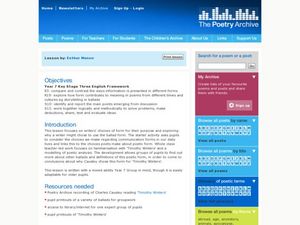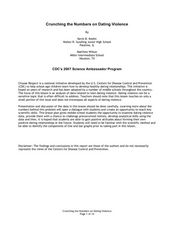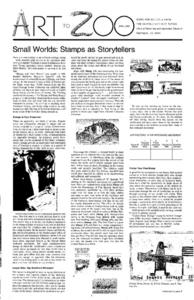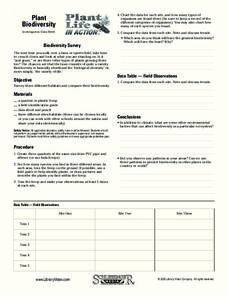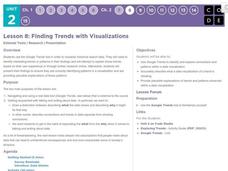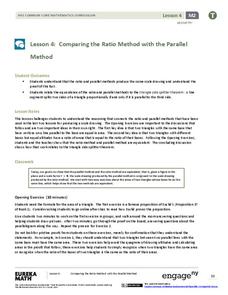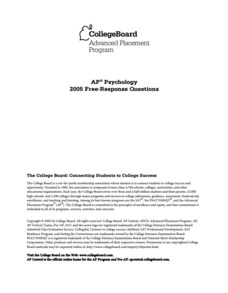Curated OER
Magic Tube Lab
In this scientific investigation learning exercise, students use "magic tubes" to make observations, hypothesize, study variables in experiments, write procedures, and draw conclusions.
Curated OER
Logic and Proof Writing
Students define inductive and deductive reasoning and write two column proofs. In this geometry instructional activity, students analyze arguments and draw conclusion. They define steps necessary to arrive at the correct answer when...
Curated OER
Urban Effects on Inshore Plankton
Students investigate the effects of urban pollution on plankton. In this plankton and pollution lesson plan, students use samples of plankton collected in urban areas to observe the effects of pollution on plankton samples. They...
Curated OER
Paper Airplanes and Scientific Methods
In this scientific method and paper airplanes worksheet, students go through the steps of the scientific method to determine which paper airplane design is best. They complete 8 steps of the scientific method including stating the...
Curated OER
Ballads and Communication
Learners compare and contrast different forms of communication. In this poetry lesson, students focus on the ballad form and read "Timothy Winters". Learners draw conclusions from the ballad and divide into groups to research the...
Curated OER
Crunching the Numbers on Dating Violence
Students read about potential violent relationships and beliefs about dating. In this relationship lesson plan students use graphs to examine data about healthy realtionshipsand draw conclusions on their results.
Curated OER
Stamps and Cemeteries as Storytellers
Learners discern the difference between commemorative and regular issue stamps while drawing conclusions about the time period. In this Stamps as Storytellers lesson, students design stamps using symbolism and historical data. In...
Curated OER
Light and Vision
Students explore how light affects vision. In this light lesson, students construct a shoe box model to represent an eye. Experiments are performed with various light sources. Students draw conclusions about how the eye works as they...
Curated OER
Reactions of Metals with Water, Acid and Air
In this chemical reactions worksheet, students experiment with reactions between 4 different metals with water, acid and air. Students make observations of copper, iron, zinc and magnesium with water, acid and air. They write an analysis...
Curated OER
Living and Nonliving Things
Students photograph five objects from a bag and five objects from the outdoors. Students categorize things by living and non-living and by properties such as color, size, structure and needs. Students draw conclusions about the basic...
Curated OER
Plant Life in Action
Sixth graders examine various habitats and record the living creatures they found. In this biodiversity activity, 6th graders complete a worksheet recording their observations. Students draw conclusions about the climate and its effect...
Curated OER
The Eye of the Camera
Students practice making summary statements and drawing conclusions. They observe ten photographs relating to Texas history and develop a statement about each. Then they compile their single statements into a summary that represents the...
Curated OER
Tornado in a Bottle
Best as an introductory lab, this "tornado in a bottle" experiment has learners trying out various methods of getting water in a bottle to create a "tornado." Using a simplified scientific method, they create a hypothesis before...
Curated OER
Lab Report Template
In this biology worksheet, students complete a lab report being as detailed as possible. They identify the problem or hypothesis. Then they write the procedures and record their findings. Students also analyze their results, discuss, and...
Curated OER
Data Analysis Using Technology
Analyze data using technology. Middle schoolers design data investigations, describe data, and draw their own conclusions. Then they select the best type of graph, graph and interpret the data, and look for patterns in trends. They also...
Curated OER
Introduction to Primary Sources
Students explore the usage of primary sources, what they are and how they originate. Artifacts are compared and contrasted as part of this historical inquiry as questions are formulated and conclusions drawn.
Chicago Botanic Garden
Historical Climate Cycles
What better way to make predictions about future weather and climate patterns than with actual climate data from the past? Young climatologists analyze data from 400,000 to 10,000 years ago to determine if climate has changed over time....
Curated OER
Animation Pre-Production
Does your class love reading cartoons? Use their talents and interests to examine the process of writing a story they wish to tell through a cartoon. They develop the beginning, middle, and end of a story based on their original...
Curated OER
The Stories They Tell -- Conclusions Worksheet
In this cycle of life worksheet, students think about data they collected after a visit to graveyard. Any conclusions they draw from the data are charted on the graphic organizer.
Curated OER
Architecture Drawing/ Door And Window Schedules
Students engage in the study of door and window schedules while focusing on the headings. They practice drawing the plans for installing windows and doors into a home and cover the process of ordering supplies and arranging installation.
G. Turrell
Science Activity 1: Light & Sound
Are you looking for lab sheets to go with your class experiment on plant response to light? You are no longer in the dark! This is a lesson that was written for a unit on light, but could easily be used to demonstrate plant behaviors in...
Code.org
Finding Trends with Visualizations
Pupils often hear about trends, but they don't always see them. The eighth lesson plan in a unit of 15 requires individuals to use the Google Trends tool. Class members identify patterns in the visualization before presenting the...
EngageNY
Comparing the Ratio Method with the Parallel Method
Can you prove it? Lead your class through the development of the Side Splitter Theorem through proofs. Individuals connect the ratio and parallel method of dilation through an exploration of two proofs. After completing the proofs,...
College Board
2005 AP® Psychology Free-Response Questions
How can diagnostic labels help children? Is hypnosis a useful tool or a fraudulent practice? An examination prompt explores controversies in psychology. A second, structured inquiry unpacks perception—and its various influences.
Other popular searches
- Nonfiction Draw Conclusions
- Draw Conclusions in Reading
- Draw Conclusions Lesson
- Draw Conclusions Reading
- How to Draw Conclusions
- Infer and Draw Conclusions
- Draw Conclusions in Literacy
- Draw Conclusions in Fiction
- Fiction Draw Conclusions
- Draw Conclusions Worksheet


